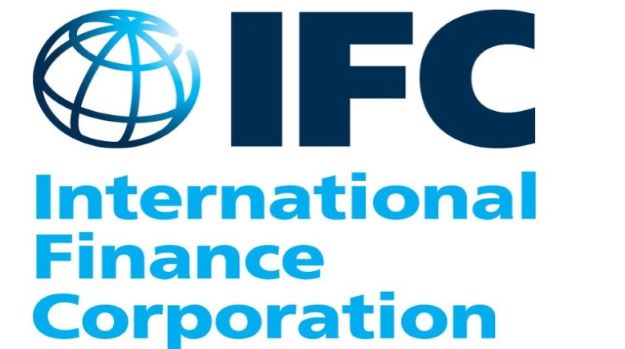General News
NPA Set to Launch e-SEN

The management of the Nigerian Ports Authority (NPA) has announced its readiness to unveil an electronic ship entry notice tagged “e-SEN” expected to provide an easy-to-use and efficient method for reporting the vessel arrival and/or departure information required by the NPA and other government agencies for vessels visiting Nigerian ports.
According to a press statement by NPA, expected guests at the occasion include all registered Shipping Companies/Agents, Concessionaires, Lessees and other Stakeholders.
The re-engineered Ship Entry Notice Application and Certificate procedures are online procedures that will replace the manual SEN Application and Certificate.
The launch of the Electronic Ship Entry Notice (e-SEN) is in furtherance of NPA’s commitment to deliver efficient and customer-friendly port services.
The procedure is a brainchild of the Information and Communication Technology (ICT) department of the Nigerian Ports Authority.
General News
Over 250,000 Cyberattacks Disguised as Anime – Report

From Naruto to Attack on Titan, cybercriminals are increasingly using anime and other Gen Z favourites as bait. In a new report covering Q2 2024 – Q1 2025, Kaspersky has found over 250,000 cyberattacks disguised as popular anime among other shows and streaming platforms favoured by a younger audience.

To help Gen Z recognise these and other cyber risks, Kaspersky is launching “Case 404” — an interactive cybersecurity game, teaching how to protect their digital lives.
For many members of Generation Z, streaming is more than a pastime, it’s a way of life that provides connection to the characters, worlds and fandoms that define their identity.
From anime to nostalgia-fueled movie marathons, Gen Z’s connection to on-screen worlds runs deep. This unique attachment creates a security paradox: the more emotionally invested the viewer, the easier it is to trick them, and Gen Z’s enthusiasm is proving dangerously exploitable.
This is extremely evident in anime culture. Over 65% of Gen Z regularly watch anime, making them the most anime-engaged generation in history. For our analysis, Kaspersky’s experts selected five popular anime titles among Gen Z: Naruto, One Piece, Demon Slayer, Attack on Titan and Jujutsu Kaisen.
Kaspersky found 251,931 attempts to deliver malware or unwanted files disguised under the names of these anime titles. Cybercriminals are tapping into the trust and affection Gen Z has for these series, often using bait like “exclusive episodes”, “leaked scenes”, or “premium access”.
Among anime titles, Naruto took the top spot, despite first airing more than two decades ago. Over the reported period, it was used as bait in 114,216 attempted attacks. Demon Slayer followed with 44,200 attack attempts.
Its meteoric rise in recent years, amplified by viral moments and a growing global fanbase, made it a natural target for cybercriminals looking to ride the wave of hype. Meanwhile, Attack on Titan — a long-standing favourite — ranked third with 39,433 detected attempts to distribute malicious content.
Apart from anime, Kaspersky also analysed five iconic films and series that continue to resonate with Gen Z: Shrek, Stranger Things, Twilight, Inside Out 2, and Deadpool & Wolverine.
These films and shows alone accounted for 43,302 attack attempts with a pronounced spike in attention to these titles from cybercriminals at the beginning of 2025. This is primarily connected to the rise of attacks on Shrek, with over 36,000 attempts in total and a sharp spike in March 2025, double the monthly average for 2024.
Platforms like Netflix, Amazon Prime Video, Disney+, Apple TV Plus and HBO Max have reshaped movies, series, and anime watching into an immersive, on-demand experience that caters to Gen Z’s love of personalised content and global storytelling. However, this has also created fertile ground for cybercriminals.
Kaspersky detected 96,288 attempts to distribute malicious or unwanted files disguised as the names of these major streaming platforms. Unlike seasonal trends, streaming platforms offer a continuous flow of content, from highly anticipated premieres to hidden gems that viewers discover months or even years after release.
When examining which streaming services were most frequently used by cybercriminals, Netflix stood out by far, involved in 85,679 attack attempts and associated with over 2.8 million phishing pages imitating its branding.
Cybercriminals take advantage of the constant traffic, broad global reach, and frequent subscription-based activity. They mimic login pages, share “free trial” links, or spoof password reset emails with full knowledge of how central Netflix is to Gen Z’s digital routine.
As Gen Z’s daily life becomes inseparable from streaming platforms, fandom spaces, and social media communities, cyberthreats evolve to mirror their interests. To meet this challenge, Kaspersky has launched an interactive online game, “Case 404”, designed specifically for Gen Z. “Case 404” invites players to become cyber-detectives and solve immersive cybercrime cases.
Through this digital adventure, Kaspersky is not just highlighting risks but empowering Gen Z to develop their mindset and skillset to stay safe in an increasingly vulnerable online world. As a reward for completing the game, participants receive a discount on Kaspersky Premium, giving them trusted tools they need to navigate the digital world safely.
“As the world of entertainment continues to evolve, so do the tactics used by cybercriminals to exploit popular content, whether through fake downloads or fraudulent merchandise offers.
“From beloved anime like Naruto and Demon Slayer to the latest blockbusters like Inside Out 2, scammers have found new ways to take advantage of Gen Z’s affinity for digital culture and streaming platforms. With the rise of these cyberthreats, it’s more important than ever for young users to stay vigilant and understand how to protect themselves online,” comments Vasily Kolesnikov, security expert at Kaspersky.
General News
Nigerians, Others Lost $70m to Denied Visas Applications to Europe in 2024

In total, African countries lost 60 million euros in rejected Schengen visa fees in 2024, analysis from the LAGO Collective has shown.

According to CNN, when Joel Anyaegbu’s application for a Schengen visa to travel to Barcelona was denied late last year, he was surprised but immediately reapplied.
He sent in more documents than were required, including bank statements and proof of property ownership in Nigeria.
He was rejected again.
“The information submitted regarding the justification for the purpose and conditions of the intended stay were not reliable,” read a checklist returned with his passport from the Spanish consulate in Lagos. The 32-year-old gaming consultant said he felt humiliated.
“I had to cancel meetings with partners at the conference I was attending,” he told CNN.
“I emailed the embassy to understand why I was denied but it has not been answered to date.”
Anyaegbu’s was among the 50,376 short-stay Schengen visa applications rejected in Nigeria last year, nearly half of all submissions, according to newly released data from the European Commission.
Applicants worldwide pay a non-refundable visa fee of 90 euros (about $100), so Nigerians alone lost over 4.5 million euros (about $5 million) seeking permission to travel to the 29 European countries that make up the Schengen Area.
In total, African countries lost 60 million euros ($67.5 million) in rejected Schengen visa fees in 2024, analysis from the LAGO Collective showed.
The London-based research and arts organization has been monitoring data on European short-term visas since 2022 and said Africa is the continent worst affected by the cost of visa rejections.
“The poorest countries in the world pay the richest countries in the world money for not getting visas,” its founder Marta Foresti told CNN.
“As in 2023, the poorer the country of application, the higher the rejection rates. African countries are disproportionately affected with rejection rates as high as 40-50% for countries like Ghana, Senegal and Nigeria.”
She says this proves “inbuilt discrimination and bias” in the process.
A European Commission spokesperson told CNN that member states consider visa applications on a case-by-case basis.
“Each file is assessed by experienced decision-makers on its own merits, in particular regarding the purpose of stay, sufficient means of subsistence, and the applicants’ will to return to their country of residence after a visit to the EU,” the spokesperson said via email.
Africans have long complained about inconsistent, sometimes baffling decisions about who gets approved or denied while applying for European visas.
Cameroonian Jean Mboulé was born in France but when he applied for a visa in 2022 alongside his wife using similar documents, his application was rejected but hers was not.
“At the time she was unemployed but with a South African passport. She had no income but received a visa on the back of my financial statement,” he told CNN.
“But the embassy said they refused my application because my documents were fake, and they weren’t sure I would come back to South Africa, where I am a permanent resident, if I went to France.”
The 39-year-old regional executive took legal action in French courts and won, forcing the French embassy in Johannesburg to grant his visa and pay him a fine of 1,200 euros.
He told an administrative tribunal in the French city of Nantes that the embassy’s decision to deny him a visa was “tainted by insufficient reasoning.”
Mboulé pointed out that he had provided sufficient guarantees that he would return at the end of his trip to his wife and daughter in South Africa where he owns a building. After he got the visa, he chose to go to Mauritius instead as he didn’t want to spend his money in France.
The EU said its member states consider visa applications on a case-by-case basis.
The Cameroonian’s case is unique as many Africans denied Schengen visas rarely appeal or contest the decisions in court.
Like Anyaegbu, the Nigerian gaming consultant, they often reapply, losing more money in the process.
Mboulé has travelled several times to the UK and other African countries but was still denied twice for Schengen.
“The financial cost of rejected visas is just staggering; you can think of them as ‘reverse remittances,’ money flowing from poor to rich countries, which we never hear about,” the LAGO Collective’s Foresti says.
Schengen visa fees increased from 80 to 90 euros in July 2024, making it even more expensive for the world’s poorest applicants.
But South African management lecturer Sikhumbuzo Maisela said the visa rejection rates for Africans were lower than he expected.
“The visa vetting process seems to be shaped less by outright prejudice and more by historical patterns of behaviour,” he told CNN via email.
“Western countries have had instances where visa holders overstayed or violated terms, and this has influenced how future applications are scrutinized.”
General News
IFC, Standard Chartered Expand Lending in Local Currencies

IFC, a member of the World Bank Group, has partnered with Standard Chartered to bolster local currency financing for private enterprises in emerging markets.

Standard Chartered will provide local currency loans to IFC in selected markets, which IFC will subsequently on-lend to private-sector projects.
The inaugural transaction under this collaboration is a loan of 9 billion Kenyan shillings (equivalent to approximately 70 million US dollars) to IFC, which will support the advancement of digital infrastructure in Kenya.
“With exchange rate volatility and rising debt pressures the need for local currency financing in emerging markets has become increasingly evident. When businesses borrow in the same currency as their revenues, they can concentrate on growth instead of exchange rate fluctuations,” said John Gandolfo, IFC Vice President and Treasurer, Treasury & Mobilization. “As we increase our local currency financing abilities, we plan to replicate this facility in other currencies across the globe.”
Sunil Kaushal, Global Co-Head, Corporate & Investment Banking, and CEO, ASEAN and South Asia markets, Standard Chartered said: “This landmark transaction in Kenya reflects our commitment to supporting financial resilience in local markets.
By partnering with IFC, we’re delivering local currency solutions that help corporates in emerging markets manage currency volatility and access the long-term capital they need to grow. With our deep roots and liquidity access across emerging markets, we are well positioned to scale this initiative and enable more businesses to access stable financing options.”
Kariuki Ngari, Managing Director and Chief Executive Officer, Kenya and Africa, Standard Chartered said: “This partnership represents a pivotal step forward in enhancing Africa’s financial resilience. By facilitating local currency financing, we not only address one of the most significant challenges facing the businesses across the continent – exchange rate vitality – but also open up new avenues for long term economic growth.
Kenya’s digital infrastructure sector is particularly well positioned to benefit from this inaugural transaction, setting the stage for scalable and sustainable financing solutions. These models will drive economic growth and empower local enterprises supporting prosperity across Africa.”
Exchange rate volatility presents a risk for companies that borrow in hard currency, such as the US dollar, but get paid in local currency.
Many local companies in emerging markets lack the capacity to effectively manage these currency risks. Therefore, securing local currency financing at competitive rates with flexible features is increasingly important to meet the growing need for diverse financing options among local companies.
IFC has increased its collaboration with global, regional and local banks to provide more local currency financing to clients. The organization has offered local currency products—such as loans and bonds, structured finance products, and risk-management solutions since the early 1990s.
Between FY15 and FY24, IFC committed local currency senior debt financing of over $30 billion US dollars in 67 local currencies through loans and bonds, structured products, and risk-management solutions.

 Telecom3 days ago
Telecom3 days agoTelcos Warn of Nationwide Telecom Blackout over Diesel Shortage

 E-Financial3 days ago
E-Financial3 days agoCBN, SEC Fine Access Holdings N1.21Bn for Infractions

 Telecom3 days ago
Telecom3 days agoNigerians Spend N5.3 Trillion on Telecom Services

 E-Financial3 days ago
E-Financial3 days agoFirst Asset Management Launches N100 Billion Infrastructure Fund to Provide Sustainable Capital for Infrastructural Development Across Sectors

 News3 days ago
News3 days agoKaspersky Uncovers Dero Crypto Miner Spreading via Exposed Container Environments

 Telecom3 days ago
Telecom3 days ago13 New Things Google Launched at I/O 2025

 General News3 days ago
General News3 days agoIFC, Standard Chartered Expand Lending in Local Currencies

 Broadcasting3 days ago
Broadcasting3 days agoCanal+ Buyout Of South Africa’s MultiChoice one Step Closer




























